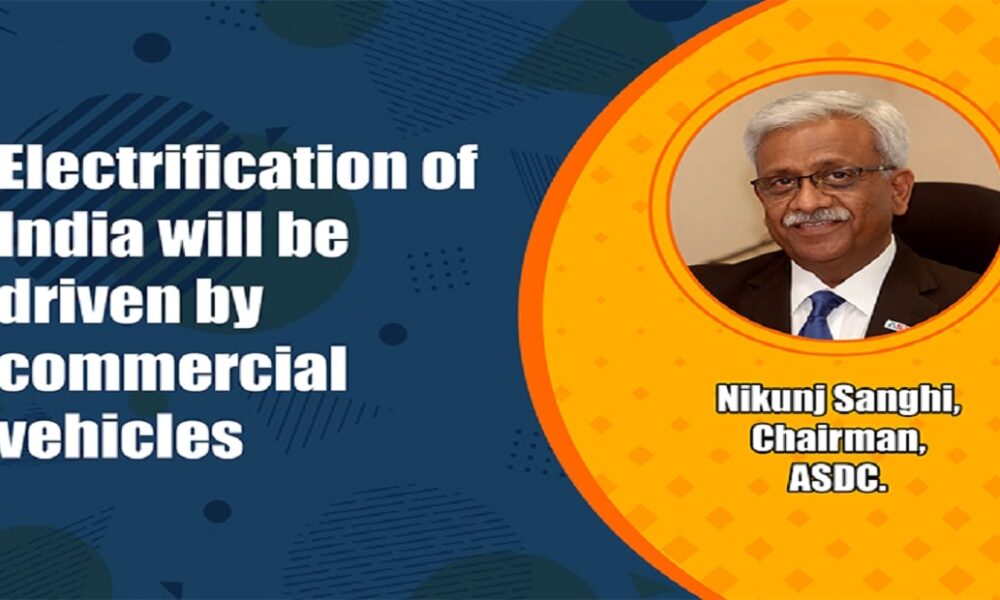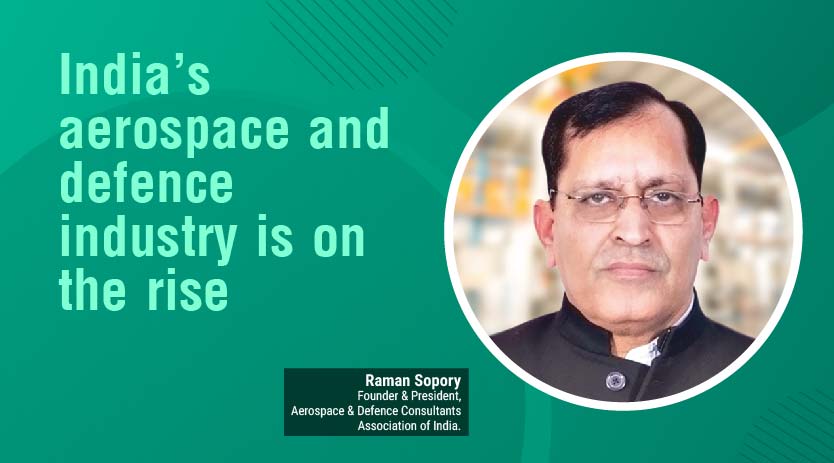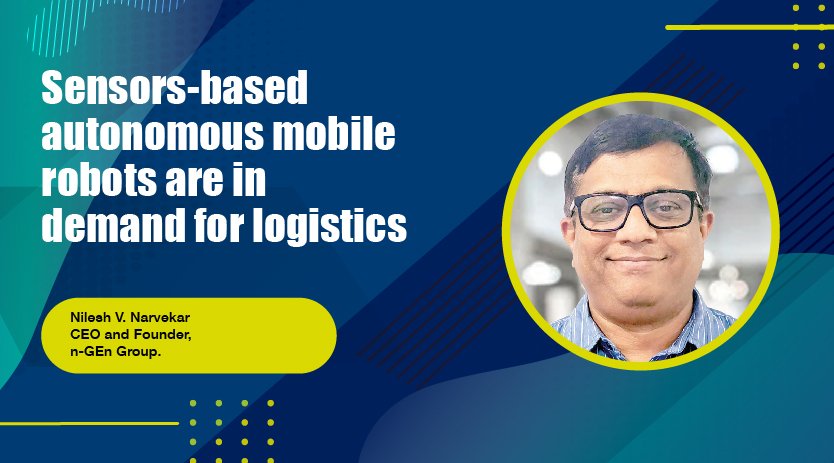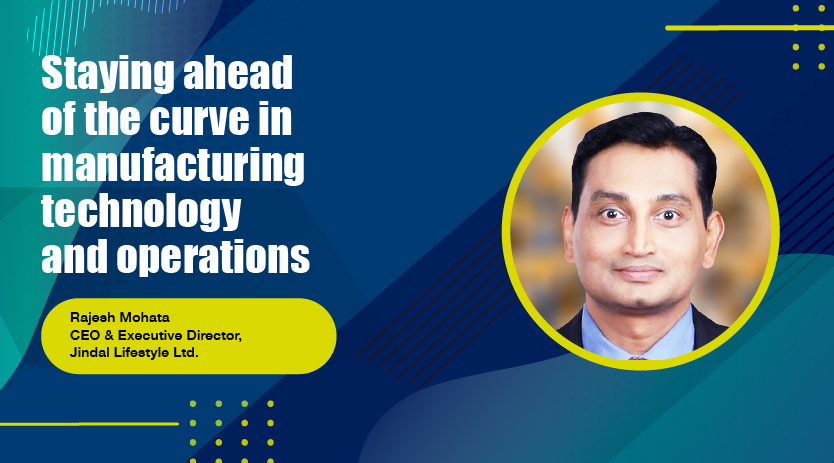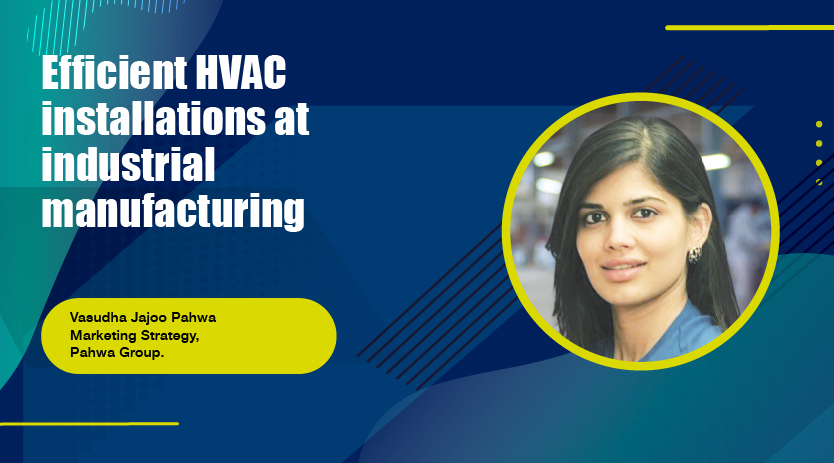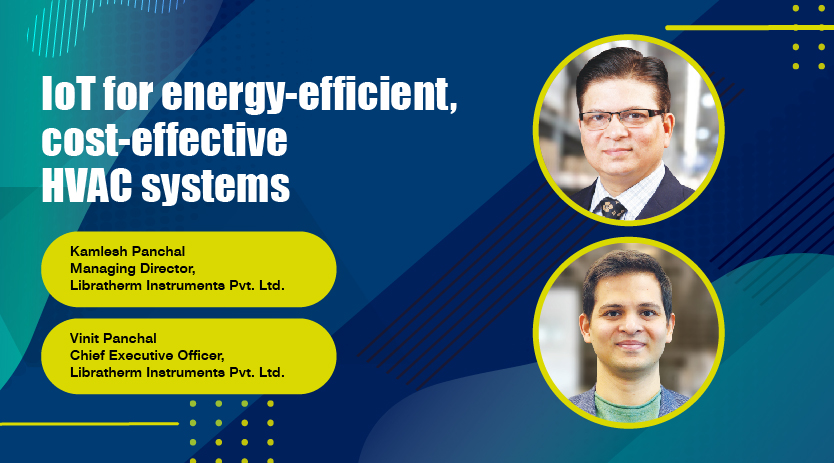Electrification of India will be driven by commercial vehicles
July 3, 2021 7:00 pm
We at ASDC are conducting training activities along with our teams of various zones. Recently, we joined hands with Google India to train over 20,000 auto dealers to bridge the digital skill gap.
India is expected to be the world’s third largest automotive market in terms of volume by 2026. With the present market trends, how can we make it a reality?
The growing demand for electric mobility will bring more innovation and a variety of players such as software and technology providers to sink into the automobile industry. The rise of technology and mobility in the global auto components manufacturing sector, by-products such as connectivity, energy efficiency, electric cars and autonomous driving have led to a huge playfield for Indian manufacturers to compete and innovate in the global market.
The Government of India is providing all possible assistance and support to the industries to ensure the development of the automobile sector. The state government is providing various infrastructural facilities like electricity, rail, road and port connectivity. The growth of the auto industry can continue unabated in related industries like steel which provides a substantial share of raw materials in making automobiles. On the other hand, government initiatives and the contribution of raw material manufacturers will pave the way for a strong outlook for the auto sector and reach an estimated $ 300 billion by 2026.
How is industry leveraging the benefits of the PLI scheme, and what kind of changes are happening around the industry?
As India is a major export hub for two-wheelers in both the passenger and commercial vehicles segment, the proposed PLI is expected to assist in the post- Covid recovery as the industry will be encouraged to invest capital. Businesses are likely to double their export earnings during the PLI period. Since the government puts together a comprehensive PLI scheme, I believe the purpose of making the automobile sector self-sufficient will only be served when we set aside a separate budget for component manufacturers. Incentives should be provided on total increased sales, including domestic sales. In line with the existing practice in other industries, the government should also raise the turnover eligibility criteria of foreign corporations for Indian companies. I hope the final PIL project will have all these criteria so that it can make a huge contribution to the government’s twin programmes of Atamnirbhar Bharat and Make in India going forward.
Sales of passenger vehicles and two wheelers have dropped by 10 percent and 35 percent by April 2021 amidst the pandemic. What kind of regulatory and financial assistance to deal with such a situation?
A dip in sales in April was e result of the partial or total lockdowns because of the onslaught of the 2nd wave of the pandemic. The degrowth will continue till the second quarter of the financial year because of slow down of the economy. However, the Indian economy is resilient and is expected to rebound once sufficient size of the population is vaccinated. Indian economy is still one of the fastest growing economies of the world and with its revival the numbers will not only come back but even grow in the long term.
Indian automobile industry contributes to 6 percent of GDP and job opportunities. How will the ongoing trends impact the employment opportunities across the automobile industry?
The automotive industry in India is undergoing a transformation because of its sustained growth and profitability. Indian automotive industry currently accounts for 7.1 per cent of the country’s GDP and 49 per cent of the manufacturing output, generating 32 million direct or indirect employment. Based on the Automotive Mission Plan 2019-2026, which is a collective vision of the Government of India and the Indian Automotive Industry, the sector is expected to employ 36 million people by 2026. The automotive industry is known to be highly dynamic with ceaseless innovations pouring in from all over the world, changing the face of the industry as we know it.
To cope with such a transformation, constant skilling, reskilling and upskilling of the existing and future workforce is extremely important. The new jobs, however, are likely to move away from traditional manufacturing and instead be added in the areas of IoT, mechatronics, robotics, 3D printing, AI, machine and deep learning, analytics, virtual collaboration, automotive design, and computational thinking. Currently, there is a mismatch in certain areas between the skills that the industry requires and those possessed by the youth in our country.
Hence, the Indian automotive sector may face a huge void if the structured reforms and initiatives are not taken to bridge the demand supply mismatch for the skilled workforce. We at ASDC are doing a lot of training activities along with our teams of various zones, including holding webinars and launching various courses. Recently, we joined hands with Google India to train over 20,000 auto dealers to bridge the digital skill gap in the country’s auto dealerships and build their capacity in this critical growth driver.
Indian government is pushing to flourish the Electric Vehicles in India. Do you think that the present market trends will further lead to maximum transition towards EV?
The blueprint for India’s EV story is holistic and is run by a separate electronic vehicle division, a vision to see 50,000 EVs on the streets of the national capital. Moreover, the establishment of a strong network of charging infrastructure will act as a catalyst in the development of this sector. It will not only successfully address the concerns of electric car manufacturers, sellers, and consumers, but also encourage other clean energy players to compete in the market.
Going forward, I believe that the electrification of India will be driven by commercial vehicles (CVs). Commercial vehicles will be more accelerated to adopt EVs as 10 percentage of India’s energy demand is driven by vehicles (CVs). 100 percentage charging will be done on John Charger as the domestic infrastructure is unstable. A concentrated market will lead to a more efficient network. Thus, driving electric vehicles is still a challenge, especially moving to the intercity city with awareness of this new age vehicle without virtually supporting any charge. The experimental drive faces a lot of practical hurdles and can be fatal to conventional fuels and people are reluctant to eliminate them altogether.
As we deal with the second wave of Covid-19 and face labour shortage, scarcity of raw materials, how Indian automobile industry cope with these challenges?
In the wake of the ongoing Covid-19 pandemic and subsequent lockdowns, the Indian automotive industry suffered 2,300 crore loss per day and an estimated job loss in the sector was about 3.45 lakh, according to a parliamentary panel report. The committee was informed by the auto industry associations that all the major original equipment manufacturers (OEM) have cut down their production by 18-20 per cent due to low demand and decline in sales of vehicles.
As a result, the employment scenario in the automobile sector has been affected and the estimated job loss in the auto sector was at 3.45 lakh. Hiring of manpower has been stopped in the auto sector. Besides that, various auto dealerships have been closed. Further, production cuts in the automobile sector have a percolating negative impact on the component industry adversely affecting the Micro, Small and Medium Enterprises (MSME) engaged in the automobile spare parts manufacturing, the report states. Considering the crisis, it is predicted that the automobile industry is likely to go through at least two consecutive years of severe contraction, leading to low levels of capacity utilisation, lack of future CAPEX investment, high risk of bankruptcy and job losses across the entire automotive value chain.
Cookie Consent
We use cookies to personalize your experience. By continuing to visit this website you agree to our Terms & Conditions, Privacy Policy and Cookie Policy.



